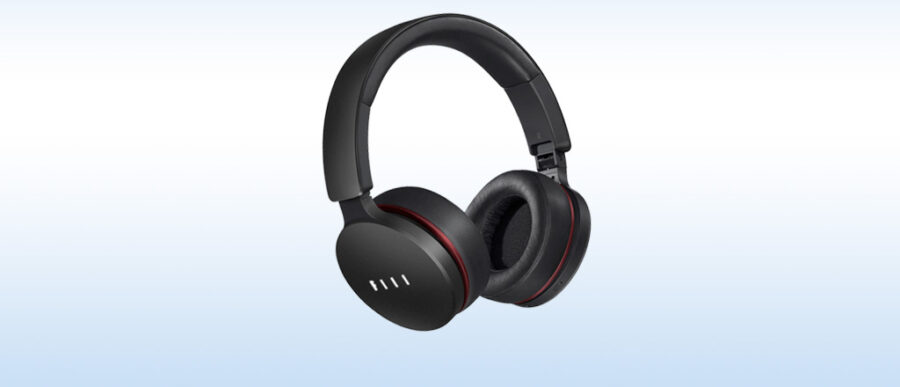Chinese manufacturing has come a long way. It is the country that puts together Apple’s iPhones, one of the world’s best-crafted smartphones. But the luster of high-quality manufacturing fades when it comes to Chinese brands. They might use the same manufacturers as foreign brands, but their adoption still lags that of established foreign names in the higher-end goods market.
Former Huawei executive Joe Peng is trying to change that with FIIL Headset, a maker of headphones that is aiming for the middle-to-higher end market for audiophiles now dominated by the likes of Apple’s Beats. He joins FIIL founder Wang Feng, a famous rock & roll star in Beijing. In this interview with Knowledge at Wharton, Peng talks about the startup’s market positioning, sales channels strategies and hardware development plans. He believes that smart wireless headphones are the wave of the future.
An edited transcript of the conversation follows.
Knowledge at Wharton: Let’s talk about FIIL. How did the company come about and what has it done since its founding?
Joe Peng: FIIL was founded in March 2015 and I joined the team in July that year. We spent half the year developing the first-generation product [of headphones] and launched the first series of products in October 2015. Then we launched two more series — FIIL Diva and FIIL Carat — this summer and fall. We are planning to have a sharing platform on product development and expect to launch two to three series of products each year when ready.
Our first-generation product has won Germany’s iF Product Design Award, the Red-Dot Design Award and [received] the HI-Res [Audio designation from the Japan Audio Society]. We have sold more than 100,000 units, the highest volume among Chinese brands for the high-end headset market. After a 30-million-yuan angel investment, we received an A-round VC investment of $20 million at the end of last year.
We actually had higher expectations on sales as we are confident of the quality of the product and it has a 30% price advantage compared to foreign brands of the same quality. However, we underestimated the difficulty of communicating to consumers and failed to deliver the message of the product features. Many people feel rock star Wang Feng is just doing this for fun and our customers are currently restricted to music buffs and fans of Wang Feng.
“If we persist with the ‘smart and wireless’ direction, FIIL will be totally different from other brands.”
Knowledge at Wharton: What challenges have you met in communicating the brand to the masses?
Peng: We positioned FIIL as a middle-of-the-road to high-end brand with our major product priced at 1,000 yuan. This assumed a target consumer with purchasing power looking for high quality audio. There may be five target consumers among 100 potential clients, but we haven’t found an effective way to reach precisely those people.
Compared to the well-established players in this segment, we are still searching for a clear brand position. [Our competitors fall into] two camps: Sennheiser, Audio Technica and Monster all have decades of history and they have gained a good reputation among music fans; Beats and some other brands have a great amount of cross-border cooperation with the sports and entertainment worlds and a great influence among young people.
To make a mark in the high-end market, you have to be able to get [a clear brand identity]. Our first-generation product has performed well in audio and design. It is comfortable to wear and has Bluetooth technology and more. However, we haven’t found a feature [that makes it] stand out. For example, the OPPO mobile phone has highlighted its exceptional battery life, Wanglaoji Herbal Tea is branded as a drink that “dispels pathogenic dryness.” … We haven’t [found] this kind of positioning yet.
Knowledge at Wharton: What is the future development direction of your product?
Peng: Headset products are going wireless, becoming smarter and will be scenario-based in the future. The first two features — “smart and wireless” — will characterize our future direction.
In the past, good headsets were all wired. However, the current Bluetooth 4.1 can support very high quality audio, and our team is especially strong in Bluetooth technology. Our CTO, Wu Ning, comes from Plantronics (a U.S. headset company), which is well-known for its wireless communication [technology]. We provide good wireless quality within 100 meters with very low power consumption and standby time of more than 30 hours.
Meanwhile, the wireless headset is likely to be popular commercially. Our first FIIL wireless is priced at 1,599 yuan, 50% more expensive than wired products, but its sales are much better. Wireless products are much more convenient than wired, with many scenarios you can imagine. For example, you can walk around with it at home. Our product portfolio will gradually eliminate wired products.
As an audio player device, the headset has a history of more than 100 years, although its function has not changed substantially. The current technology is smarter, more interactive and more convenient. For example, when you are wearing a headset, someone comes to you to say hello. Can the music be stopped automatically and then restart automatically? This means it gets more humanized. I believe if we persist with the “smart and wireless” direction, FIIL will be totally different from other brands.
Knowledge at Wharton: Are you on track to launch new features? What else are you working on longer term?
Peng: The automatic off-and-on function has been realized. We had a lot of ideas which have not been actualized due to current technology restrictions or concerns about the integrated user experience, as some new functions might weaken the performance of others. For example, we found out that the headset can be independent and separate from the mobile phone but it will require an implanted 4G or Wi-Fi communication module. This will have some negative impacts – radiation as well as increased power consumption and weight.
“The headset has a history of more than 100 years, although its function has not changed substantially.”
Our product development process is quite interesting. We all brainstorm together and put forward some bold and unconstrained ideas. However, the R&D team is usually more conservative because they have to balance all demands from the angle of engineering feasibility.
Knowledge at Wharton: Many players in the headset market have hundreds of years of history. How can a startup catch up with them?
Peng: In terms of key technology, the headset industry has seen no substantial improvement. That’s why a new team can have a late development advantage. Our R&D members all come from leading brands of high-end headsets. Most of them have more than eight years’ experience in design, communication technology, noise reduction and other key production processes.
We have also invested massive resources in R&D. The whole FIIL team is around 70 people with 40 in the hardware R&D unit and another 10 in Internet experience-related functions. In other words, our R&D is more than 70% of total headcount. Annual R&D expenses are around 30 million yuan for our Suzhou Research Lab, which is unparalleled in domestic headset companies.
Those foreign high-end brands are mainly produced by OEM factories in the Pearl River Delta of China. Decades of experience of [manufacturing goods in China have given rise to] a bunch of experienced workers who we call “golden-ears.” We trust their production capability. When we finish the design, they know how to [create headsets with] high-quality audio in engineering. There is hardware, mature technology, experienced talent plus manufacturing capability from the south China regions. That’s why even young brands can produce high quality headsets.
Knowledge at Wharton: What role does rock star Wang Feng play at the company?
Peng: Wang Feng is not experienced in product design, which is all made by the backstage team. But his role is to define what is a good headset and what are its determining functions. As a musician, he has used a lot of headsets in his career and can put forward suggestions from the point of view of consumers.
He also has a group of experienced DJ friends around him. When a model of the product is available, he can easily find a great number of musicians or people in the music industry to try it out and then [recommend modifications to] the model.
In terms of hardware, he is more sensitive on industrial design (ID) and takes part in the discussion of ID for every generation of the product. Our partner, Germany’s Design Affairs, will appoint a German advisor to communicate with him. Every time we review or brainstorm on ID, he will actively take part.
“There is hardware, mature technology, experienced talent plus manufacturing capability from the south China regions.”
In addition, Wang Feng has a lot of advanced thoughts and ideas. For example, how could the headset be connected with a massive music library? He is currently creating a new Internet music content platform — iwini — and he would like to see how these things can get integrated.
Knowledge at Wharton: What do you think about the buzz a famous celebrity brings to the company?
Peng: I don’t want FIIL to be viewed by outsiders as a celebrity company. I would rather you view us as a technology company and pay more attention to our investment on R&D and product features. For example, we have experimented a lot with new materials and new processes. We have introduced ceramic materials to headsets, which is quite a challenge in the process and very rare in the industry.
Many outsiders would see FIIL [as a celebrity-endorsed company]. That’s wrong. [That means we have a problem with] communicating our brand in this regard. But I believe at the end of the day, product and reputation will win.
Knowledge at Wharton: How big is the market for the headset industry? How do you see the future?
Peng: This market has annual sales of around 10 billion yuan. Most of the units are priced below 300 yuan. We are focused on the market above 1000 yuan with annual sales of around $4 billion to $6 billion yuan. That’s 2 million headsets, but it’s mainly occupied by foreign brands.
Consumers in this market love good quality equipment and they would even buy a headset at 10,000 yuan. Another category is the new rich with enough purchasing power; they love music and the pursuit of sound quality. We have done some surveys and found that 60% of FIIL consumers use iPhones and most of them are aged between 20 and 30.
The auditory perception is not as obvious as visual perception, especially in China. Overall, music literacy is not [adequate.] Most people don’t realize the importance of sound quality. However, people’s understanding of the quality of music and sound is deepening. They have also started to pay for music. I believe that in the future there will be a large number of young people looking for exquisite sound quality. We haven’t reached that explosive moment yet. We are getting ourselves prepared.
Knowledge at Wharton: The market is rapidly changing. How would you view your target consumers and summarize your brand style?
Peng: To put it simply, it’s Light Luxury. There are many young people today upgrading their consumption to the Light Luxury concept instead of luxuries. Compared with consumers in prior years, young people today are pursuing higher quality, better design and [custom] tastes. The consumption has to match his personality and lifestyle.
Knowledge at Wharton: What is your sales channel deployment now? Do online sales account for a big chunk?
Peng: Online sales include our own official online mall and stores on JD and TMall. But we have more than 200 offline channels including chain retailers, professional audio stores, fashion stores and even some stylish coffee shops.
Offline sales account for 20% of our total but this ratio is rising. I expect offline channels to be mainstream for us in the future, because consumers can experience the quality of sound in offline stores. Offline sales might reach 70% of the total in the future.



